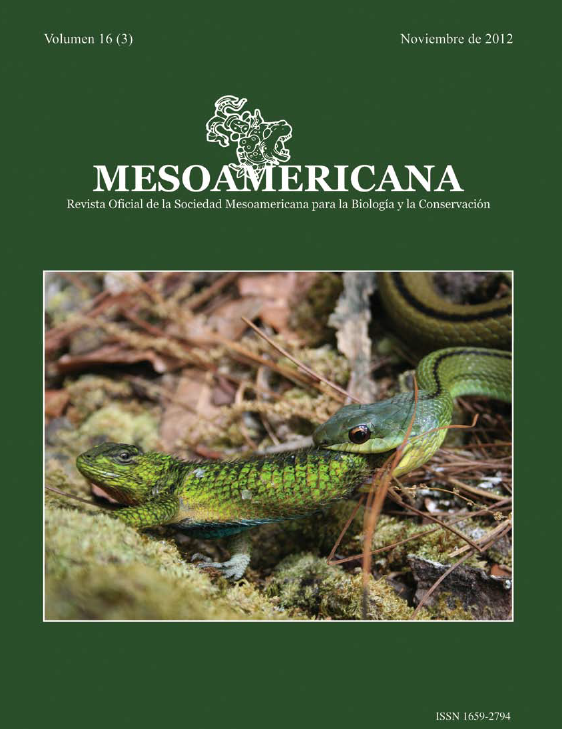

We carried out a preliminary study of the primate populations surviving in a protected forest of the Chucanti Natural Reserve, Darien Province. The study site is located in the Maje Mountain chain, on the frontier between the Panama and Darien Provinces (08·47´16.5” N, 078·27´01.4”W). With three km² of mature forest surrounded by fragmented forest and farming lands, the study site averages temperatures between 24-27 ºC and annual rainfall of 1,940.5 mm at an elevation of >1,250 m. We utilized line transect and triangulation methods. Three species of non-human primate were identified living in this forest: black-headed spider monkey (Ateles fusciceps rufiventris), conforming by subgroups of four individuals (range: 1-13), with complete groups of at least 20 individuals and a total population of 60 individuals, with a population density of 9.3 ind/km²; the Ecuadorian mantled howler monkey (Alouatta palliata aequatorialis), with six troops in total, 14 individuals as average per group, 85 total individuals and density of 28.4 ind/km²; and the white-faced capuchin monkey (Cebus capucinus capucinus), with only one group of six individuals and density of two ind/km². The results are similar with other primate densities calculated for other species of the same genus living in connected forest. Although the Convention on International Trade in Endangered Species (CITES) classified only the Darien black spider monkey as Critically Endangered, the three monkeys are locally threatened by bush meat hunting and commercial deforestation. This research is the first study for these species in Darien, which is part of a conservation initiative that pretend to minimize the high risk of extinction of those animals in Panama.